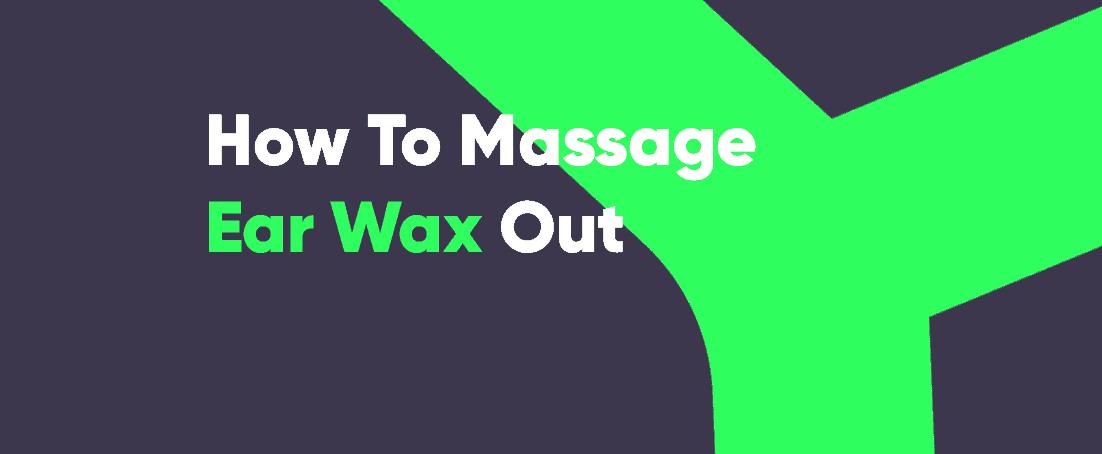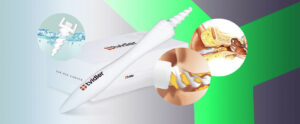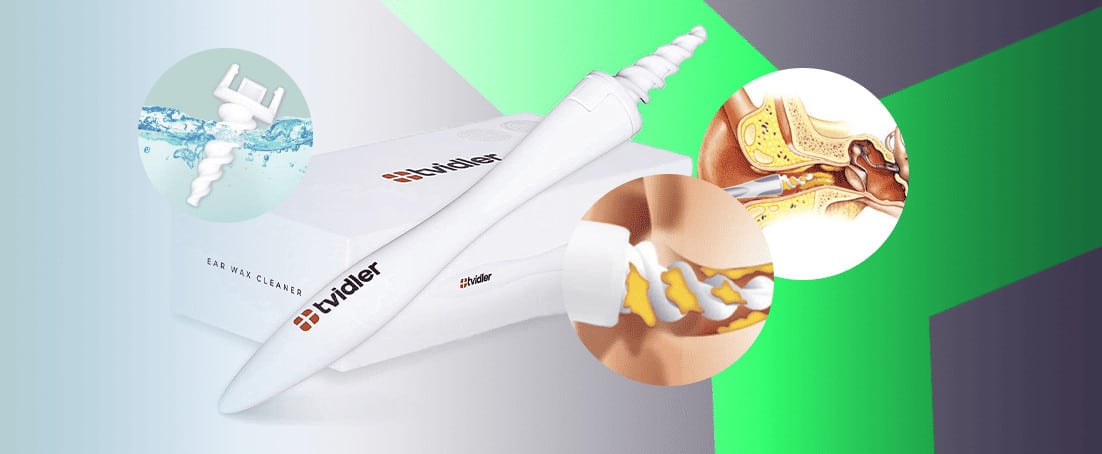
Excessive ear wax buildup is a common problem that many people face. It occurs when the ear wax produced by the ear glands accumulates and hardens in the ear canal. Too much wax can lead to various issues, such as hearing loss, inner earache, dizziness, and even ear infections. It is important to address this problem to prevent any further complications.
One effective way to deal with ear wax buildup is through ear massage. Gently massaging the area around the ear softens the wax and facilitates its removal. In this article, I will explore the correct methods and techniques for safely massaging ear wax out of your ears.
⚠️ Our Top Pick For Safe Ear Wax Removal: ⚠️

What Is Ear Massage?
Ear massage is a technique used to help alleviate ear wax buildup when you gently massage the area around the outer ear canal. It can be a supplementary method to ear wax removal tools, but it is important to note that it comes with risks if done incorrectly or without other methods.
Ear massage can help soften the wax and encourage its natural removal, promoting good ear health. However, it is crucial to approach this technique cautiously and seek other home remedies or professional guidance if necessary.
Limit Your Cotton Swab Usage
While cotton swabs may seem like a convenient tool to clean your ears, they often do more harm than good when it comes to ear wax removal. Inserting them into the ear canal can push wax further in, potentially causing blockages and damaging the sensitive structures within the ear. Moreover, they can irritate the delicate skin of the ear canal, paving the way for infections. It is advisable to limit the use of cotton swabs for cleaning the outer ear only.
For safer and more effective solutions, opt for targeted ear wax removal tools like Tvidler PRO which are designed to safely scoop out the wax without pushing it deeper into the canal. Natural oils can also be a gentle alternative, aiding in the softening and natural expulsion of ear wax, thus encouraging a healthier ear canal environment while reducing the risks associated with cotton swab use.
3 Easy Steps On How To Massage Ear Wax Out
Step 1: Preparation
Before starting the outer ear massage, it is important to prepare properly. Begin by washing your hands thoroughly to maintain hygiene. Then, gather the necessary materials, including a clean towel, warm water, and mild soap. It is crucial to use it to avoid any irritation or allergic reactions.
Step 2: Massage Technique
To begin the outer ear massage, start to gently massage the area around the ear canal in a circular motion using your fingertips. Apply slight pressure, but be careful not to exert too much force to avoid any discomfort or injury to the ear canal.
Continue massaging for about 2-3 minutes, focusing on the entire outer ear. It should be enough to stimulate blood circulation and loosen the ear canal, making it easier to remove stubborn ear wax.
Step 3: Aftercare
After completing the massage, follow proper aftercare to ensure the best results. Use a clean towel to wipe away any excess oil or moisture from the outer ear. Avoid inserting any objects into the ear canal, except from specific ear wax kits. Foreign objects, even cotton buds, can push the ear wax further inside or cause damage to the ear drum.
If you experience any pain, discomfort, or worsening of symptoms after the massage, it is advisable to seek other home remedies or professional medical advice. Likely, an ear wax removal tool or prescription ear drops of hydrogen peroxide will need to be used in such cases.
Effective ear wax massage should result in loosened ear wax or even push ear wax out by itself. However, an outer ear massage can safely remove ear wax only in minor cases.
Severe ear wax blockage can only be treated with warm water, ear wax removal kits, or, as a last resort, with the help of a medical professional. Still, if you know how to massage ear wax out, you can alleviate pain and help these other methods to be more effective.
8 Other Methods To Use With Ear Massage
Ear Wax removal tools, natural oils, and removing ear wax at a medical institution are methods that can be used after you tried to massage your ear and it didn’t work or worked only partially. The methods below are three of the most common when treating an affected ear canal.
1. Using Ear Wax Removal Tools
Ear wax removal tools are a practical and effective solution for addressing ear wax buildup. These tools are designed to safely remove excess stubborn ear wax from the ear canal, providing relief and improving hearing. They come in various forms, such as ear picks, and ear syringes, and some are packed as one ear wax removal kit.
Unlike other methods, such as cotton swabs, which can push the wax further into the ear canal, ear wax removal tools are specifically designed to safely remove the wax without causing ear infection or damaging the ear canal or drum.
Using ear wax removal tools is an effective way to address ear wax buildup, but it is important to use them correctly while following the instructions. It is also advisable to seek professional guidance if you are unsure about using these tools on your own.
Check out my article on Best Ear Wax Removal Tools if you are interested in learning more.
My Top Pick: Tvidler PRO

Tvidler PRO is my personal choice for cleaning excess ear wax buildup. It is one of the safest and most affordable home remedies. With its innovative spiral design, Tvidler effectively removes excessive ear wax from the ear canal without causing any harm. If you want to learn more about Tvidler and why it is my top pick, read my detailed Tvidler review.
2. Using Natural Oils
Ear drops are a valuable alternative to ear wax removal tools. They help soften the wax, aiding its natural expulsion. While ear drops are not as precise as tools like Tvidler, natural oils are a gentler approach that can help remove ear wax in less severe cases. However, you should consult a professional before use to avoid complications or get prescription ear drops.
My top pick: Debrox Ear Wax Removal Kit
Debrox Ear Wax Removal Kit is my personal choice for cleaning ear wax buildup with ear drops. It is a safe and affordable option that you can use at home. With its effective formula, only a few drops of Debrox soften and loosen stubborn ear wax, making it easier to clean. However, to fully remove ear wax blockage, other tools or stronger ear drops might still be needed.
3. Medical Ear Wax Removal
Medical ear wax removal is a professional procedure performed at a medical institution to address stubborn ear wax buildup. A trained healthcare provider will use a bulb syringe, warm water, hydrogen peroxide, a metal extraction tool, and other techniques to safely remove the excess wax.
It is important to follow their guidance and recommendations for the best results. However, I think it’s worth considering this option only as a last resort for removing ear wax, as it can be uncomfortable, and such procedures get expensive.
4. Warm Cloth – The Traditional Way of Ear Wax Removal
Utilizing a warm cloth is a simple yet effective way to aid in the removal of ear wax. Simply warm a clean, damp cloth with water at a comfortable temperature, then gently press it against the affected ear, allowing the warmth to soften the wax. Following this, use the cloth to wipe the outer ear gently, aiding in the removal of loosened wax. This method is beneficial as it is gentle and can be easily incorporated into your daily hygiene routine. However, it might not be very effective in removing substantial wax buildups deep inside the ear canal.
5. Using a Saline Solution
Using a saline solution is another home remedy that can assist in ear wax removal. To use this method, mix a teaspoon of salt in half a cup of warm water until it dissolves. Lie down with the affected ear facing upwards, and use a dropper to put a few drops of the solution into your ear canal. Stay in this position for 3-5 minutes to allow the solution to soften the wax. The advantage of this method is that it is simple and uses household items. However, it may not be potent enough to deal with severe blockages, and there is a slight risk of irritating the ear canal if done frequently.
6. Ear wax Suction
Ear wax suction is a procedure generally undertaken by healthcare professionals to remove stubborn ear wax buildups. It involves using a suction device to carefully remove wax from the ear canal. This method is particularly efficient for substantial blockages and offers quick relief. The downside is that it can be somewhat uncomfortable, and doing it yourself at home without proper training can risk injury to the ear.
7. Ear Irrigator
Ear irrigation involves using a stream of warm water to clean out the ear canal, often using an ear irrigator device available in pharmacies or online stores. To undertake this, you would fill the irrigator with warm water and gently squirt the water into your ear canal to loosen and remove the wax. This method can be very effective, but it must be done with caution to avoid damaging the ear drum, and it is not recommended for people with certain medical conditions, including those with a history of ear problems.
8. Hydrotherapy
In the context of ear wax removal, hydrotherapy could refer to a more sophisticated irrigation procedure potentially involving various liquids such as water and saline solution, possibly combined with warmth or different pressures to facilitate the removal of ear wax. It is a method that can cover a range of treatments and should always be carried out by a healthcare professional to avoid the risk of infection or damage to the ear canal. The benefit is that it can be a very thorough method of cleaning, but the drawbacks include potential discomfort during the procedure and the necessity of seeking professional assistance.
Risks of Removing Ear Wax Yourself
Treating a clogged ear at home can be effective, but it is important to understand the risks involved before attempting to remove ear wax on your own. While there are various methods you can try, such as an ear wax kit, mineral oil, or warm water, it is crucial to proceed with caution.
It takes a bit of practice and careful reading of instructions to safely remove ear wax with home remedies. The exact instructions depend on the ear cleaning method and tools you choose. Here are a few risks that you should keep in mind and avoid.
Injury to the ear canal. Improper use of tools or excessive force can cause injury to the delicate tissues of the ear canal. It can lead to pain, bleeding, or even damage to the ear drum.
Pushing ear wax deeper. Without proper knowledge and technique, attempting to remove ear wax can result in pushing the wax deeper into the ear canal. It can worsen the blockage and make it more difficult to remove.
Infection or mild skin irritation. If the ear canal is not properly cleaned or if unsterilized tools are used, there is a risk of introducing bacteria or causing irritation, which can lead to an ear infection.
Allergic reactions. Some individuals may be allergic to certain oils or solutions used for ear wax removal. It can cause allergic reactions, such as itching, redness, or swelling. It’s often recommended to start with warm water or natural oils.
It is important to note that these risks arise from using an improper ear wax removal kit, lack of knowledge, or underlying health conditions. So if you have a severely affected ear or don’t know how to treat your ear gently, consider visiting a healthcare provider. They will perform ear wax removal with their tools for a price.
Conclusion
Ear wax buildup is a common problem causing discomfort and hearing difficulties. Ear wax massage can be a cost-effective option to help soften the wax and encourage its natural expulsion, but it may not be as effective as other methods.
For safe and effective ear wax removal, my top recommendation is Tvidler PRO. If that doesn’t help, consider contacting a healthcare service provider.




